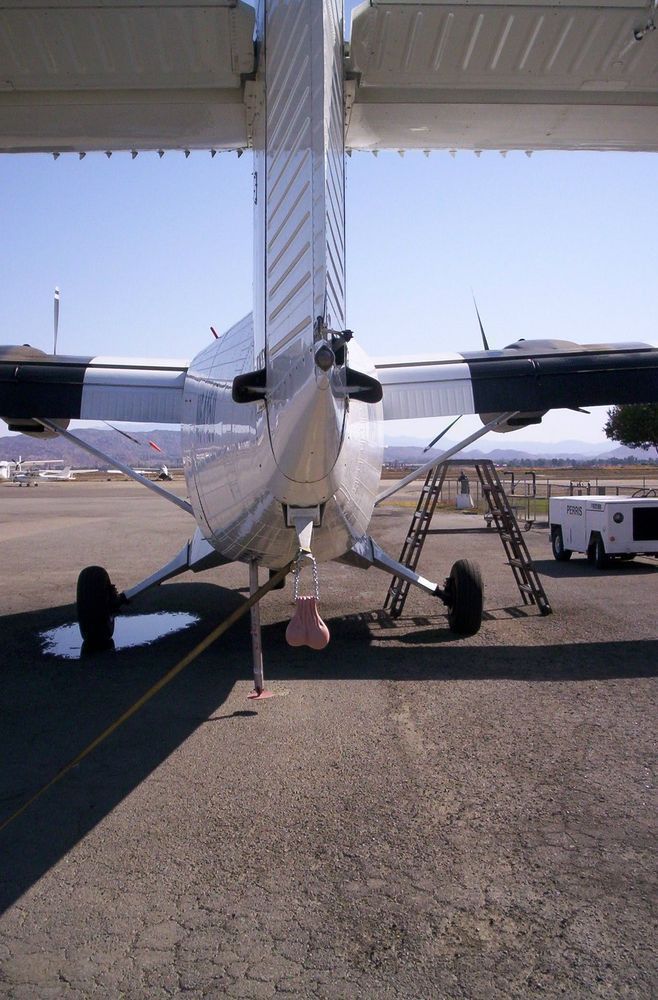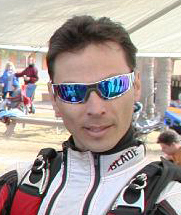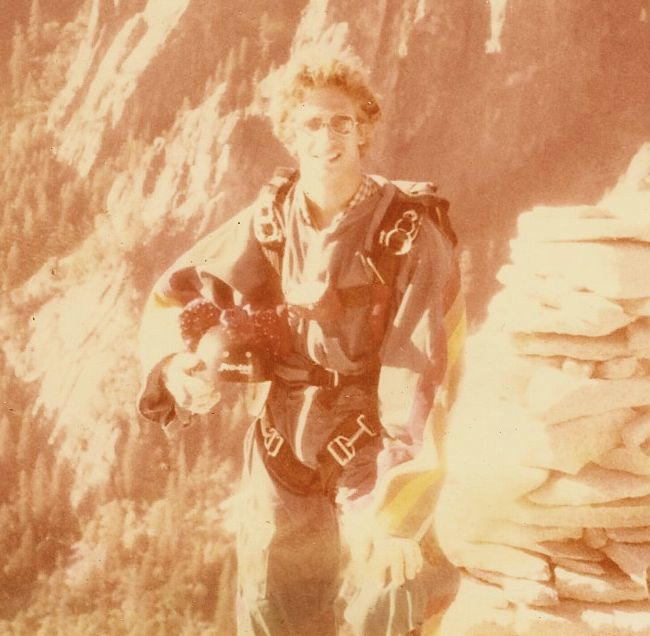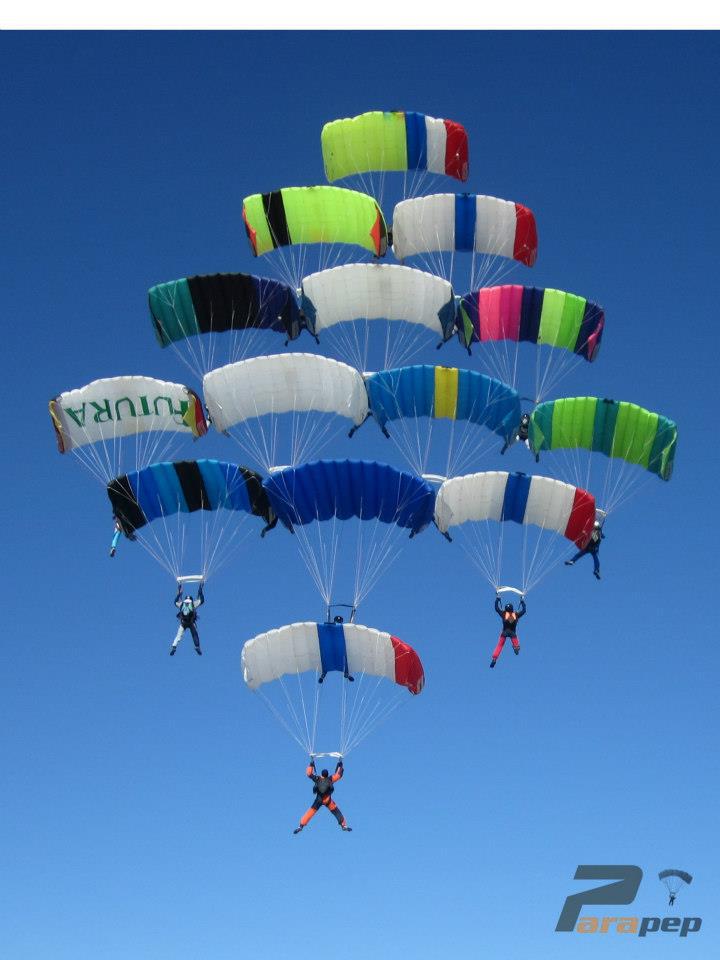bigbearfng 18
Quote>Definitely sounds like this could/should be added to our pre-jump mental EP's.
I would suggest that pulling the reserve by 1600 feet (thus providing time for RPC hesitations) would be preferable to intentional instability after a reserve pull.
Point taken-I was just thinking back to student days of ripcord mains where I was taught to check over your shoulder if nothings happening after pulling.-simple and quickly made type of move.
riggerrob 643
That way, the air flow up your back can quickly eliminate any pilot chute hesitation.
Coincidentally, that is about the same angle you will be at when an RSL pulls your reserve ripcord.
Keep in mind that body position varies wildly depending upon how badly you are spinning under a malfunction, but pulling a reserve ripcord a half second after cutting away is usually the best plan.
billvon 3,063
>after pulling.-simple and quickly made type of move.
Sorry, I misunderstood what you were getting at, then! I agree that the checking-over-your-shoulder is a good idea, both from a perspective of seeing what's going on and helping break up any burble that might be back there. Ideally you could stay belly-to-earth while you did that.
PC hesitation is a big issue in the military and I've been fortunate to have worked on a CFD (computational fluid dynamics) program that addresses this problem, especially with the addition of equipment on the jumper. Having personally done it in the air and seen it in the CFD program, the simple act of vigorously checking over the shoulder changes the airflow over the back of the jumper enough to usually eliminate any PC hesitation, this is especially true of a jumper without any additional equipment attached to them.
The head high orientation does work ,however it's typically not an orientation a skydiver finds themselves in when in normal freefall at pull time. Conversely, head low has a similar effect and in some cases this can be the jumpers orientation during the pull sequence either due to poor body position and or severely dropping a shoulder. The result is a less than desirable opening shock usually. For the standard flat dumb and happy body orientation, the shoulder check is proven to work.
Some people dream about flying, I live my dream
SKYMONKEY PUBLISHING
skydiverek 63
QuoteThe Military however still uses spring loaded PCs on the main and reserve and standard operating procedure following deployment of the main or reserve canopy is to vigorously check over the right shoulder to ensure the PC isn't bouncing around in the burble.
Check the hesitation at 1:33 sec.:
http://www.youtube.com/watch?v=ep5S77uSAug&fmt=18
Some people dream about flying, I live my dream
SKYMONKEY PUBLISHING
tbrown 26
QuoteThe solution to this is actually nothing new. However, a majority of the people skydiving have never or have very limited experience with a spring loaded main and reserve pilot chute. The Military however still uses spring loaded PCs on the main and reserve and standard operating procedure following deployment of the main or reserve canopy is to vigorously check over the right shoulder to ensure the PC isn't bouncing around in the burble.
Before hand deploy came along, all skydiving deployments were by ripcord and spring loaded pilot chutes. Hesitations were common, everybody had them and they were accepted as a fact of life. Training focused a lot more on the problem. And then Bill Booth invented hand deploy. I still remember Memorial Day, 1976 when a friend of ours showed us all his brand new Wonderhog and explained to us how the new "hand deploy" system worked. It worked so well that within two years almost everyone had switched over to a hand deployed rig. It was great - almost overnight p/c hesitations had been almost completely eliminated.
What it comes down to though, is that ripcord deployment is a SKILL, that has to be learned and mastered, like any other skill. And it isn't being treated like a skill. For thirty years now, newbies have only been trained to pull their handles in an emergency, as if that gets the job done all by itself. Thankfully for the most part it has. But the truth is, "it ain't open 'til it's open" and we are occasionally seeing reserves open too low to prevent serious injuries or death.
There needs to be more training. Skydivers today don't pull a ripcord until they're already in trouble and going low. That's no time to start learning a new skill. As in the old days, a certain amount of hesitation has to be accepted as a fact of life and there has to be more training focused on anticipating and dealing with the problem effectively.
Your humble servant.....Professor Gravity !
Andy9o8 2
QuoteAfter watching lots of video of reserve deployments and more than twenty reserve rides, I have concluded that the ideal body position - to deploy a reserve pilot chute is head high (spine 45 to 60 degrees from horizontal).
That way, the air flow up your back can quickly eliminate any pilot chute hesitation.
Coincidentally, that is about the same angle you will be at when an RSL pulls your reserve ripcord.
Keep in mind that body position varies wildly depending upon how badly you are spinning under a malfunction, but pulling a reserve ripcord a half second after cutting away is usually the best plan.
...which is why I think there needs to be more debate over whether "pull silver and arch" should be trained into the EP's.
Andy9o8 2
QuoteThere needs to be more training. Skydivers today don't pull a ripcord until they're already in trouble and going low. That's no time to start learning a new skill. As in the old days, a certain amount of hesitation has to be accepted as a fact of life and there has to be more training focused on anticipating and dealing with the problem effectively.
Agreed - remember how we all used to be trained to check over your shoulder after ripcord pull - not only to check that the PC has launched, but to break the burble and send the relative wind across your back. Seems sensible to do that after reserve pull now, rather than just arching "to get stable". "Stable" creates the burble.
riggerrob 643
Something I learned during my last ride on a round reserve ... tuck your legs back, BEFORE pulling the cutaway handle.
Tucking your legs back prevents the whole backlooping through your reserve suspension lines hassle.
Fortunately I was quick on the reserve ripcord and did not backloop far enough to interfere with reserve deployment, but it was a scary sensation!
QuoteAgreed - remember how we all used to be trained to check over your shoulder after ripcord pull - not only to check that the PC has launched, but to break the burble and send the relative wind across your back. Seems sensible to do that after reserve pull now, rather than just arching "to get stable". "Stable" creates the burble.
I was just reading through this thread thinking that. The ripcord pull sequence I was trained on (counting to 5):
1 (wave
2 (reach)
3 (pull)
4 (check)
5 (check)
I'm going to start adding the 'check, check' to my EPs that I go over on the ride up. And Tom makes some excellent points re: it being a 'lost skill'...we're coming across a lot of those these days, eh? (Spotting...?)
One question: given that stability is a key component to pilot chute hesitation, does it not seem like this discussion thread is somewhat more applicable to experienced jumpers in total malfunction situations? If I'm an AFF-1 student going through a Cypres fire at 750 feet, I'm more likely to be a bit unstable already than someone with 4000 jumps in the same scenario, right? (Although students *can* be stable...and the experienced jumper might be struggling like hell at 750 feet. But still.)
OTOH, if I'm hanging under a reserve and arch as I pull silver, I won't likely be completely belly-to-earth before my reserve pin has been pulled, will I? Won't it take a couple of seconds for the arch to affect my head-up orientation?
Just curious...
Some people dream about flying, I live my dream
SKYMONKEY PUBLISHING
Baksteen 84
QuoteQuoteWhat it comes down to though, is that ripcord deployment is a SKILL, that has to be learned and mastered, like any other skill.
So is hand deployment. Think of a lazy throw for instance.Quote...which is why I think there needs to be more debate over whether "pull silver and arch" should be trained into the EP's.
AFAIK, while reserve procedures in the Nethelands are taught single handed at some DZ's and double handed at others, both procedures do teach students to arch after pulling the reserve.Quotethe simple act of looking over ones shoulder after deployment, be it a main or reserve deployment, can alleviate hesitations in most cases. As was stated, this is more of a training issue for those who have never used or been exposed to spring loaded PCs or those who have used spring loaded PCs but have simply forgotten or stopped doing it.
While I completely agree, I remember that when i had my first PC-hesitation (springloaded pilotchute main) I was checking over my shoulder automatically:
1001 - 1002 - 1003 - 1000WTF??
Edited to emphasise that my hesitation was on a main, not reserve."That formation-stuff in freefall is just fun and games but with an open parachute it's starting to sound like, you know, an extreme sport."
~mom



.thumb.jpg.4bb795e2eaf21b8b300039a5e1ec7f92.jpg)





Since later 2006, they have offered a feature that would offer the last used offset at the beginning of the sequence. This would be added during the maintenance cycle.
Not a perm change, but perhaps better anyway - less potential for confusion/screwup.
Share this post
Link to post
Share on other sites